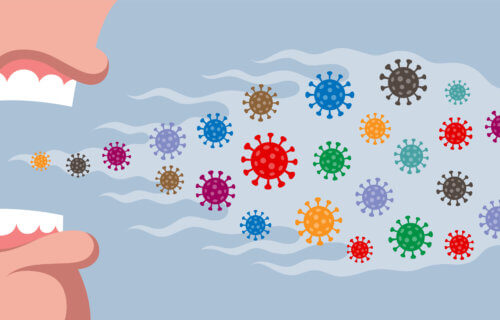HANGZHOU, China — Scientists say a robot nose could soon be able to sniff hidden diseases simply by “smelling” a patient’s breath. An international team is working on new techniques which analyze the chemical compounds in a person’s breath, sweat, and tears — adding that these chemicals serve as “fingerprints” for thousands of diseases.
Scientists call this concept “volatolomics” and note that it’s still several steps away from working in a lab to becoming a commercially available product for doctors and consumers.
As for how it works, when someone smells a fragrance, a fresh flower, delicious cooking, or just gets a whiff of garbage, their nose is encountering volatile organic compounds. These chemicals have a low boiling and evaporate very easily — which is why they’re “volatile.”
Every organism actually releases VOCs whether they know it or not. The body does this for defense, communication, and even reproduction. However, our bodies also release VOCs incidentally in response to biological changes — such as getting sick. Study authors note that the release of these compounds is unique to each biological process, creating a VOC fingerprint that ties them to certain diseases.
For doctors, volatolomics creates a way of finding illnesses in their earliest stages of development. For diseases like cancer, this is crucial, since cancer is significantly easier to treat before it spreads throughout the body.
Taking an old idea into thew 21st century
Although volatolomics is a relatively new field, researchers say the concept of smelling someone’s breath to find disease actually dates back to the Ancient Greek physician Hippocrates and the Ancient Chinese doctor Bian Que.
More recently, scientists have identified thousands of VOC signatures over the last five decades. Unfortunately, scientists didn’t have the technology to do anything with this information 40 or 50 years ago.
Now, machine learning technology and artificial intelligence is allowing scientists to put all of this data to use. Meanwhile, nanomaterial sensors like the “eNose” can accurately spot VOC fingerprints coming from food, beverages, pollution, and people.
“But the field is so young, and draws in researchers from many fields such as chemistry, electrical engineering, computer science, materials science, and of course clinicians who deal with patients every day, who are unused to speaking to each other, who typically employ different methodologies, and who often do not even use the same terms,” says study co-author Yun Qian, a researcher with the Cancer Center of Zhejiang University, in a media release.
“So we brought a bunch of us from these various disciplines together to write a comprehensive review paper that we hope will work as a bridge connecting each other’s expertise in this sprawling field.”
What obstacles are still waiting for the robot nose?
In the new study, the team first summarized all the VOCs that have a connection to disease that come from bodily sources.
“This part of the review was crucial, as such a list of targets has been highly sought after by the chemists, materials scientists, and electrical engineers in particular,” says Mingshui Yao, a researcher at the State Key Laboratory of Multi-phase Complex Systems with the Chinese Academy of Sciences. “They needed to know what the fingerprints or ‘biomarkers’ are that they are designing their diagnostic equipment for. Now they can just look this up.”
In the next part of their review, they looked at the challenges still facing VOC detection devices like the advanced “electronic nose” and “photonic nose.”
The authors hope their review highlights all the gaps scientists still need to fill, especially in regard to better VOC absorbing materials, selective sensing materials, advanced sensor structures, and smart data-processing methods before this technology becomes a reality.
The team’s findings appear in the journal Nano Research.

